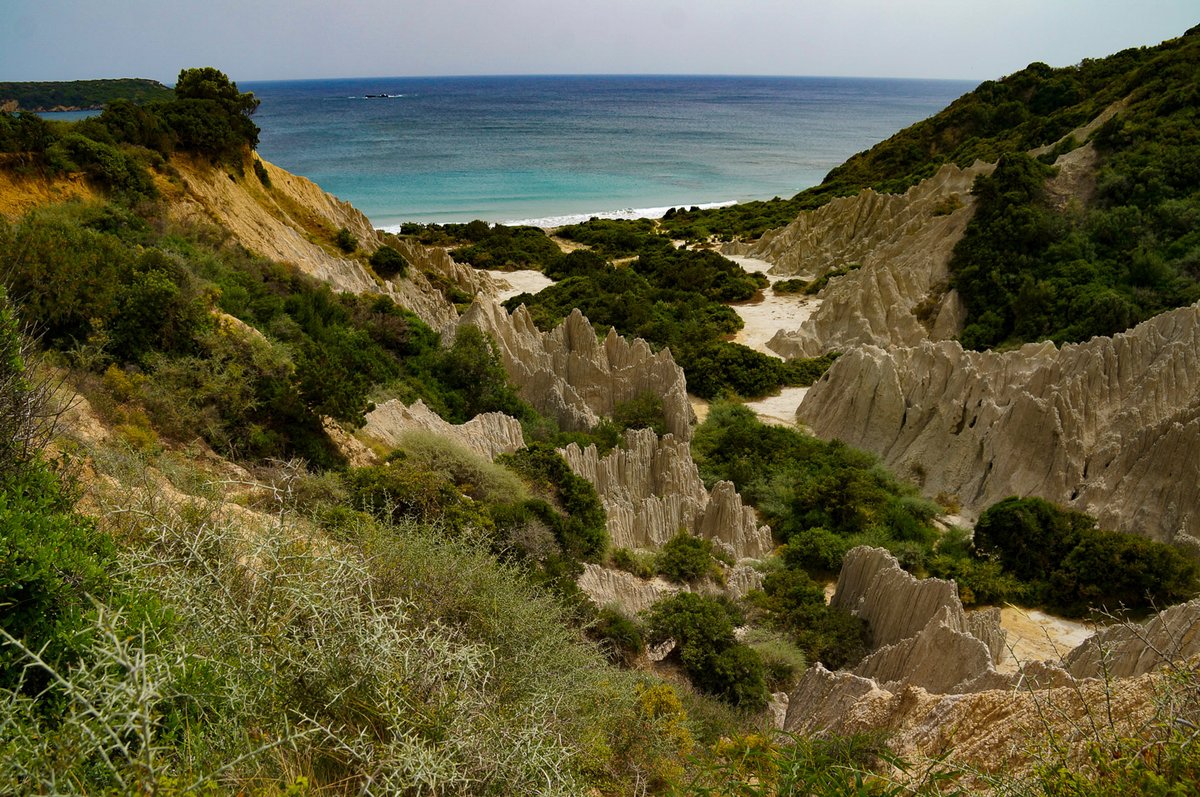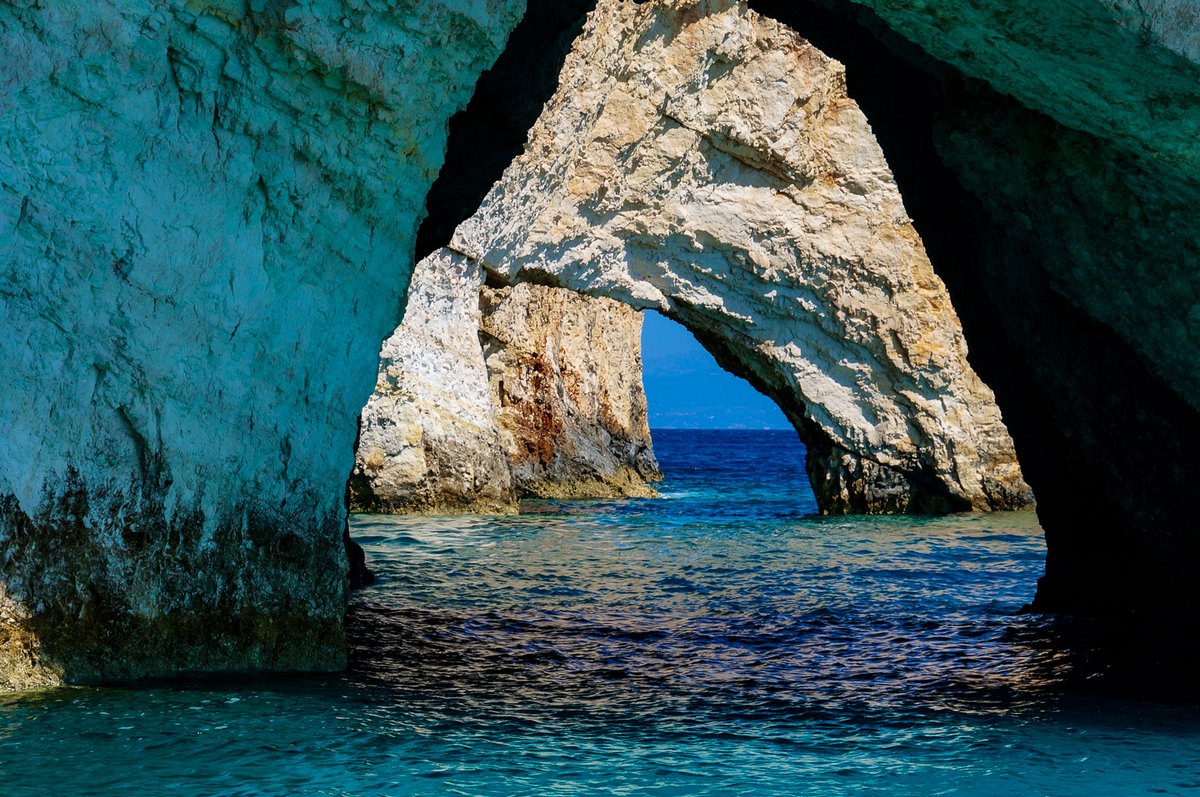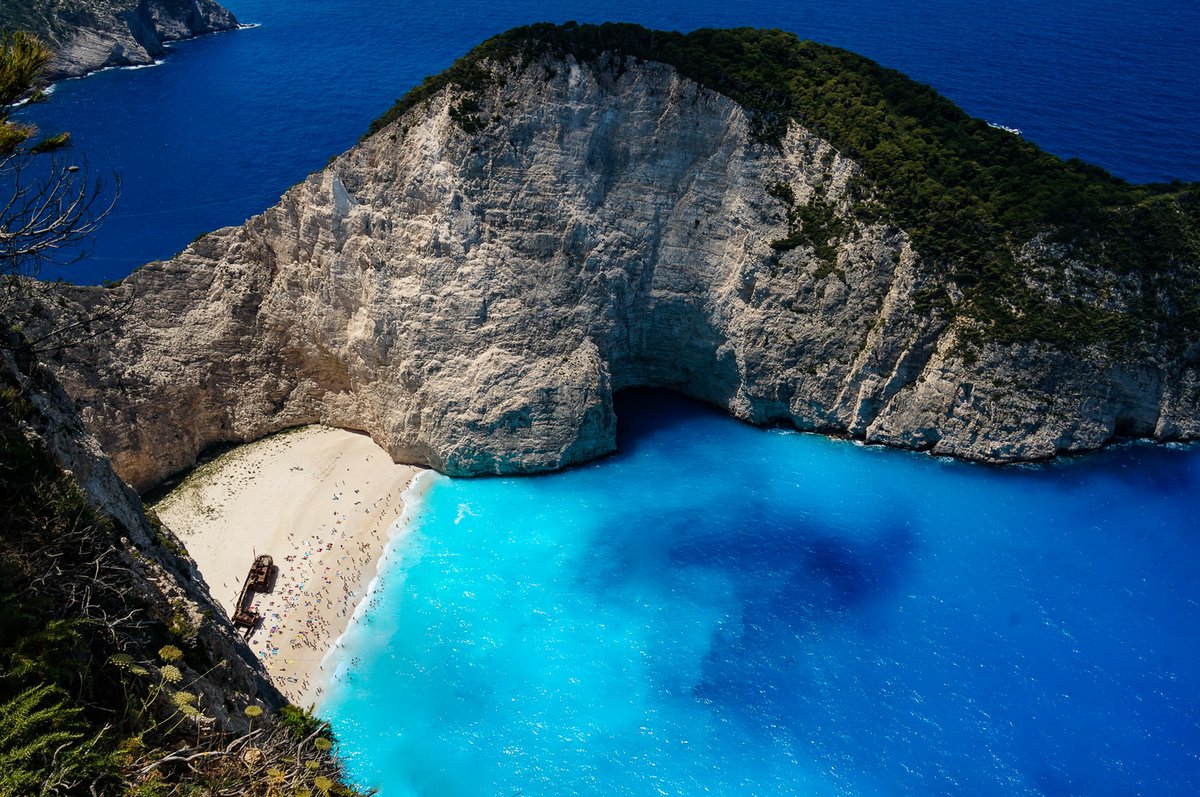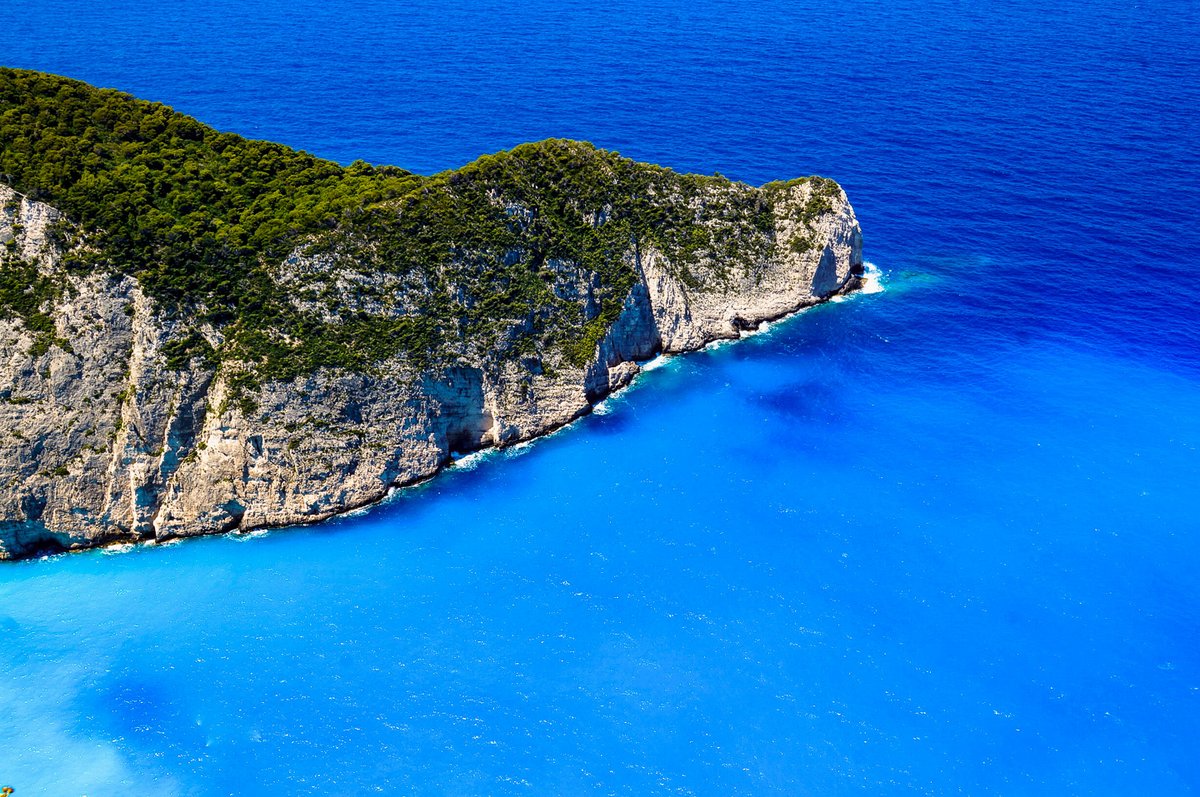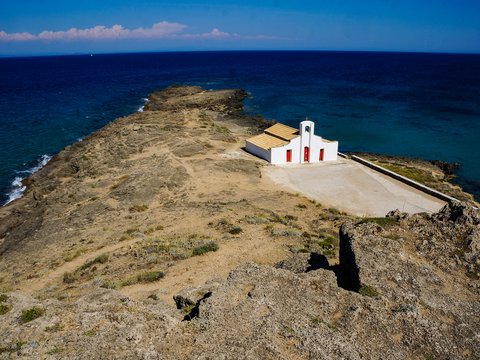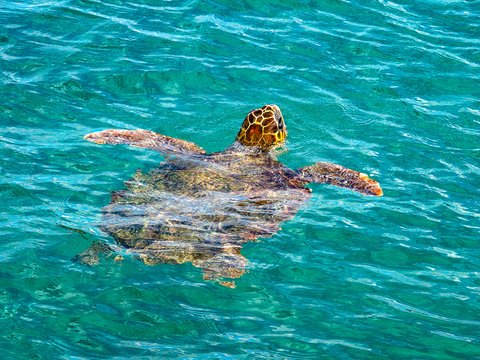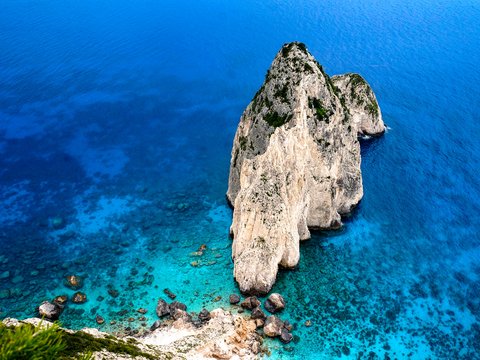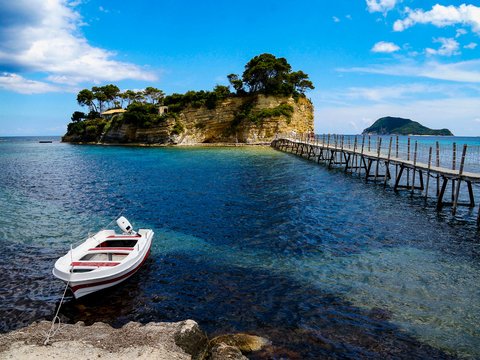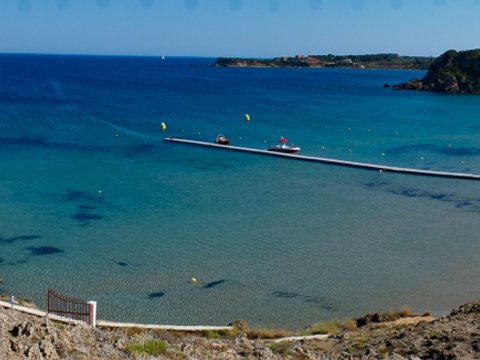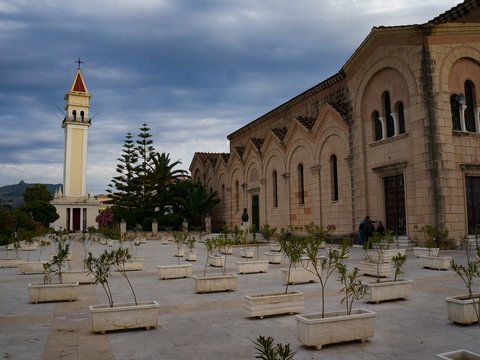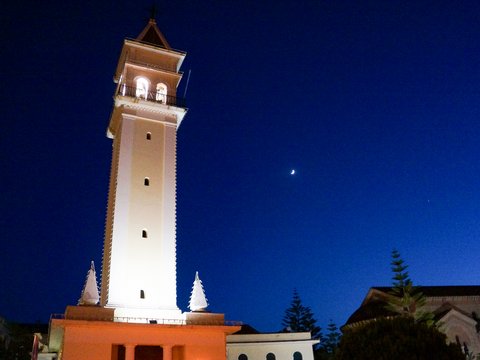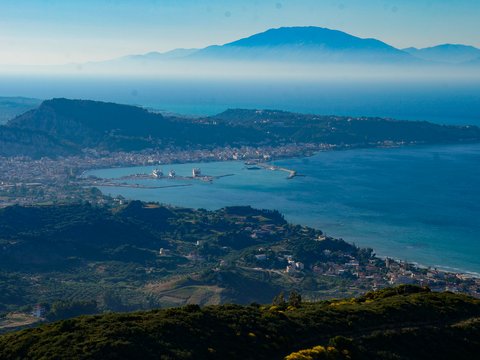It is considered to be the sunniest island in the Mediterranean but Zakynthos has much more to offer than "sun, fun and nothing to do". The Greek island is a paradise for cave divers, families and nature lovers.
Zakynthos is with an area of about 408 km² after Corfu and Kefalonia the third largest and southernmost of the larger Ionian islands. In 1953 the island's capital of the same name was almost completely destroyed by an earthquake and a conflagration. In the municipal art museum a model of the city stands before this disaster. Two other museums belong to the sights of the city: the new Byzantine Museum with important works of art of the epoch, as well as the museum and mausoleum of the national poets Solomos and Kalvos. The tourists and locals - myself included - prefer to stay on the beautiful beaches. There are many small, slightly sloping beaches, which makes the island particularly attractive for family holidays. Kalamaki, for example, offers fine white sandy beaches and dunes, but also cliffs. Porto Zorro is also known for cliff diving. Snorkelers and divers like to explore the underwater world there. Surfers prefer the northeast coast. The beaches of the west coast are often only accessible by waterways, which is why they are not overpopulated even in the high season. There is also one of my two favourite places of the island: the Navagio bay with the shipwreck of Zakynthos that is only accessible from the sea. The wreck of the coaster "Panagiotis" lies on a small beach, surrounded by up to 200 metres high, vertical rock walls, above which there is a small platform. It is the only vantage point that allows a view of the wreck from the land side and a rewarding day trip. The smuggler ship stranded in October 1980, when it suffered machine damage in stormy seas, pursued by the coast guard, and stranded without a driver with its illegal load of cigarettes in the bay formerly called "Agios Georgios". The crew of the ship was able to save themselves. Those who are already travelling in the north should also visit the blue grottos at Cape Skinari, which can be visited for little money with small boats. The water there reflects in different shades of blue. And a second place I like: On a short circular hike one reaches the Mizithres rock at the southwestern coast of the island near the village Keri.
In general, sun worshippers must make sure that they do not make themselves comfortable on one of the protected beach sections. These are part of the national marine park set up to protect the sea turtle. The Caretta caretta (loggerhead sea turtle), threatened with extinction, uses the beaches in the south of the island along the bay of Laganas as a nesting area. Between 850 and 2000 egg deposits of the loggerhead sea turtle are counted per year. From the beginning of June the female turtles come to the southern beaches to bury their eggs in the sand at night. The incubation period is about 55 days. The hatched young immediately make their way to the open sea. It is very important to protect the clutches as the survival rate of the young is very low. Only one or two turtles make it out of about 1000 eggs.
If you want to combine beach holidays and nightlife, you can stay in Laganas. By the way, a popular alternative to hotels are holiday flats and villas all over the island. Besides a kilometre long sandy beach, Laganas offers countless taverns, clubs and bars. Well then: "Yamas"!

To properly prepare for your trip
How you get there:
Nonstop from Zurich with Edelweiss
How you get around:
with rental car e.g. www.billiger-mietwagen.de
How long am I supposed to go:
1 to 2 weeks
Best travel time:
May to October
Highlights:
Navagio shipwreck, Keri rocks, Laganas with turtles
More info:
www.zakynthos.net.gr
Realised by Michael Bachmann
Further travel pictures under www.kissed-by-nature.com
